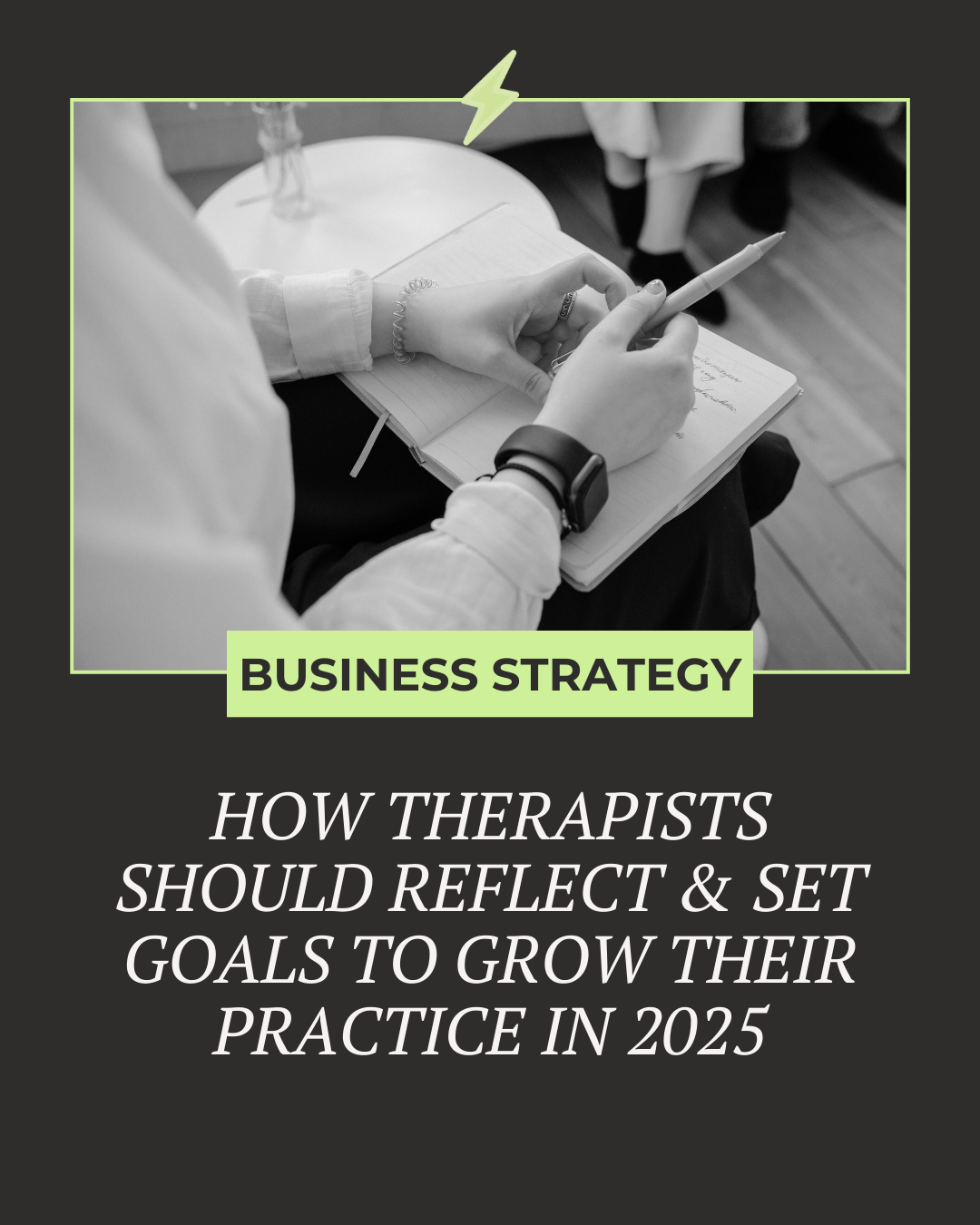How Therapists Should Reflect & Set Goals to Grow Their Practice in 2025
The end of the year is the perfect time for therapists to reflect on their practice, assess what’s working, and set meaningful goals for the year ahead.
Whether you’re an independent practitioner or leading a group practice, taking the time to evaluate your achievements and challenges can help you grow and improve in 2025.
Here’s a step-by-step guide to reflecting on your practice and setting actionable goals for the new year.
Therapist Practice Year-End Review Process
1. Reflect on last year’s goals
Before setting goals, it’s important to take stock of your practice’s performance in 2024.
Reflection helps you understand what’s working, identify areas for improvement, and celebrate your wins.
Consider these key areas:
Client Growth: Did you see an increase in clients? Were you able to retain them?
Financial Health: Did you meet your revenue and profit goals? Were there unexpected expenses?
Time Management: Did you maintain a healthy work-life balance, or did burnout creep in?
Therapeutic Outcomes: Did your clients achieve their goals? Were there specific methods or approaches that worked particularly well?
Team Development: If you lead a group practice or are considering expanding to one, how is your team's health? How is morale amongst your team, and how are they serving their caseloads?
Take time to jot down your reflections in a way that works for you.
2. Start an outline of your new goals for your practice
The reflection process will likely highlight areas for improvement, which is great! This is the outline for your goals for next year. Your starting goals could look like:
Grow my caseload by 20% by Q2 2025 by improving my marketing efforts and streamlining intake processes.
Complete three continuing education courses by December 2025 to expand my knowledge in trauma-informed care.
Increase revenue by 15% by Q4 2025 through raising session rates and offering a new group therapy program.
Implement a four-day workweek by March 2025 and maintain the same revenue level by optimizing my scheduling system.
Setting goals that align with your personal and professional priorities will make them more meaningful and straightforward.
Don’t worry about making them perfectly comprehensive at this stage!
3. Think about what growth and success mean for your practice
For many therapists, growing a practice means attracting new clients. For others, it's about having a sustainable client load so you don’t get burnt out pursuing the career you care about.
Getting clarity about what success looks like to you can help you to dial in your goals.
This way, you have a guiding north star when you need to pivot throughout the year.
4. Create an action plan for your practice
Clear action plans support the best goals.
Break your goals into smaller steps, assign deadlines, and track your progress throughout the year. For example:
To increase your caseload, you might:
Update your website by January.
Launch a Google Ads campaign by February.
Network with three new referral partners by March.
Regularly revisit your plan and adjust as needed to stay on track.
Want Some Help Growing Your Therapy Practice?
Reflecting on your practice and setting goals isn’t just about improving your business—it’s about becoming the best version of yourself as a therapist and creating the space to support your clients more effectively.
With thoughtful planning and intentionality, 2025 can be your best year yet.
Ready to grow your practice? Let’s chat about how we can support your goals with tailored solutions to help you grow the practice of your dreams.
Book a free strategy session to get started.


